The ice once protected the Arctic ocean from threats – but as it melts it exposes the sea to fishing, shipping, mining and pollution. Would a marine protected area help secure this fragile ecosystem or is it too late?
When the Arctic explorer Pen Hadow had to start swimming from ice floe to ice floe, rather than walking, he experienced for himself what scientists and Indigenous peoples of the north have long known: the floating sea ice, which used to reliably cover the Arctic Ocean for most of the year, is disappearing.
For Hadow – who has crisscrossed that ocean on skis, both accompanied and solo – the vanishing ice wasn’t just something that made his travels difficult. He knew that the Arctic ice is home to whole ecosystems above and below the water, protecting marine life from the worst impacts of humanity, pollution and the climate crisis. “The sea ice created a natural barrier,” says Hadow. “It’s undisturbed by vessels to this point.”
But for how long? The minimum extent of the ice in summer is dropping by about an eighth every decade. In June, scientists reported it is already too late to save the summer ice, foreshadowing a completely open Arctic Ocean for the first time since humans made the first stone tools 2.6m years ago.

As it melts, it invites in ships – offering them the chance to shave thousands of miles off common routes, to exploit the ocean’s largely untouched fish populations and dig up minerals on the seabed.
Without the ice as a natural barrier, the central Arctic Ocean – an amoeba-shaped area of water spanning more than 1m sq miles (2.8m sq km) off the coasts of Canada, Russia, Greenland, Norway and the US – is open territory. International waters are beyond any country’s jurisdiction. However, a patchwork of recent treaties – including a UN treaty on the high seas, agreed on 19 June – is providing new means of protecting the water column from chemicals, noise and traffic; the seabed from fossil fuel exploration and mining; and fisheries from overexploitation.
Nevertheless, without international cooperation, that potential will be wasted. Hadow, through his 90 North Foundation, is among those fostering that cooperation with the aim of trying to designate the entire middle of the Arctic Ocean a marine protected area (MPA).
The effort was part of what won him the 2023 Shackleton Medal for the Protection of the Polar Regions, an award inaugurated the year before. Hadow wants no fishing, no shipping, no mining, and no oil and gas in the Arctic ocean at all. “This is a rest-of-life mission for me,” he says.
Without an MPA, he adds, the central Arctic Ocean is in danger of becoming an unprecedented free-for-all.
The ocean is a multidimensional space: the air above, the surface, the water itself, the seafloor and the area beneath that. In the Arctic, the surface is a floating pan of ice, home to seals, polar bears, birds, foxes and other animals that depend on its hard crust to travel, hunt and rest. Beneath the surface, more animals depend on the underside of the ice: bowhead whales use it to shield themselves from orcas, while Arctic cod feed on the algae that grow on it.
Not only does this delicate ecosystem need the ice, but if it vanishes it could simultaneously enable another set of harms – when the world’s fishing fleets arrive. Commercial ships are already depleting fish populations all over the world; without an understanding of the Arctic Ocean’s capacity to handle industrial fishing, they will be at risk of doing the same here.
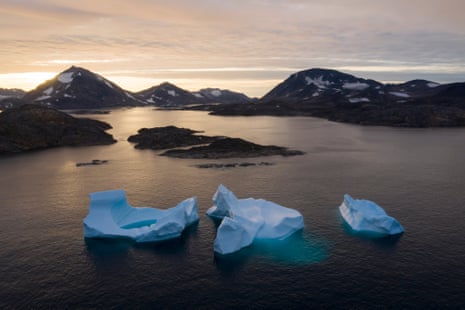
In October 2018, the world came together to address this threat by banning commercial fishing in the central Arctic Ocean. It was a strong endorsement of the precautionary principle, guarding an understudied ocean against the potential for unknown levels of exploitation.
“It was an incredible achievement,” says Martin Sommerkorn, head of conservation for the WWF Arctic Programme. Critically, the agreement included not only the main Arctic states – Canada, Russia, Denmark, Norway, the US and Iceland – but also China, Japan, South Korea and the EU, all of which have large “distance” fishing fleets that could push to enter new Arctic waters.
The agreement is worded in such a way that suggests commercial fishing will eventually take place in the Arctic, but not before it is better understood. To that end, the 90 North Foundation says it will spend £125m-£150m on research over the next 15 years to help persuade world leaders that protection is necessary.
“To say, ‘Let’s not bother [protecting the Arctic Ocean] because we don’t know’ is not the right way of looking at it, in my view,” says Hadow.
The UN treaty on the high seas, signed in June, succeeded the fishing treaty, as an even more useful legal tool for protecting international waters. To date, all of the Arctic’s protected marine regions have been inside the 200-mile exclusive economic zones (EEZs) of individual countries. The largest such protected area, designated in 2019, is Canada’s Tuvaijuittuq MPA, known as the Last Ice Area because it is expected to be the last Arctic place to have sea ice after the rest has melted.
Despite the recent victory, some observers argue that it is better for countries to focus on areas inside their own territory, such as Tuvaijuittuq. Michael Byers, an international law scholar and Arctic expert, believes countries can more successfully protect their own ocean networks, particularly in rich coastal waters.
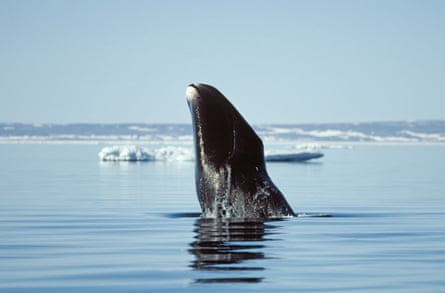
“An MPA for Pikialasorsuaq [the open water between Canada and Greenland, which attracts huge numbers of whales, fish, birds and polar bears] is much higher on my priority list [than an MPA for the entire Arctic],” Byers says. He argues the alternative would be difficult to agree on and provide less protection.
Lisa Koperqualuk, president of the Inuit Circumpolar Council of Canada, agrees. She wants Inuit in her country to co-manage a Pikialasorsuaq protected area with Inuit in Greenland – a rare instance of cross-border protection by Indigenous peoples.
“Because of our knowledge and our relationship with the marine area, that ties in with our right to self-determination and our right to take part in decisions relating to the Arctic waters,” Koperqualuk says.
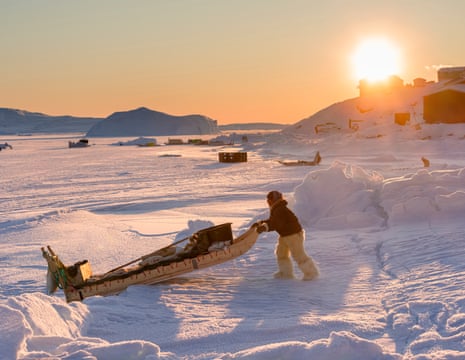
Nevertheless, the movement to protect all of the Arctic Ocean – not just national waters – is gaining energy. The new high seas treaty still has to be ratified by the individual states, but it is no longer wishful thinking to imagine prohibiting activities such as oil and gas extraction, mining, bottom-contact trawling and dumping in international waters.
António Guterres, the UN secretary general, tweeted recently: “This historic achievement is an example of global threats being met by global action.”
Threats remain to the Arctic, however, including seabed mining, which many conservationists and scientists warn could destroy ecosystems by stripping the ocean floor and kicking up clouds of sediment, although others say it is needed for the green energy transition. Norway has announced plans to mine in an area of the Arctic Ocean identified as a high priority for conservation by the WWF; only a full international Arctic MPA could prevent it.
Then there is shipping, which brings noise, pollution, invasive species and ship strikes. At its most recent meeting, the International Maritime Organization (IMO) tightened the polar code governing ship travel. But a report from the Arctic Council called on it to go further and declare the entire Arctic Ocean a particularly sensitive sea area (PSSA), thereby restricting traffic.
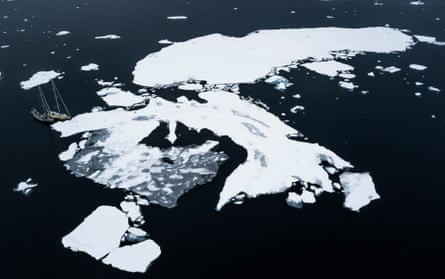
To make matters worse, the Arctic Council is not meeting due to the war in Ukraine. The council, established after the cold war as a forum for science, development and conservation, has long been praised for avoiding the tensions that can work their way into international organisations. But Russia’s invasion of its neighbour has halted much Arctic protection work.
Byers calls Russia – which has laid claim to swaths of Arctic seafloor including the area under the north pole itself – “an indispensable partner in the central Arctic Ocean”. Even if council meetings did resume, he doubts serious protections would happen if Russia were not there. “An Arctic Ocean MPA without Russia would be like a Lake Ontario MPA without Canada,” Byers says.
Taken together, the various individual measures and agencies could theoretically cover many of the direct threats to the Arctic Ocean and do away with the need for an all-encompassing MPA. But patchwork protection has downsides. Different treaties, negotiated separately, are weaker than a single umbrella treaty – particularly when it comes to anticipating and responding to new threats. There are “external” threats, too, such as acidification due to global heating, or the accumulation of pollutants that migrate into Arctic waters via the “grasshopper effect”.
Sommerkorn says: “[A patchwork] might be OK, as long as you have static conditions. But we don’t have static conditions.”
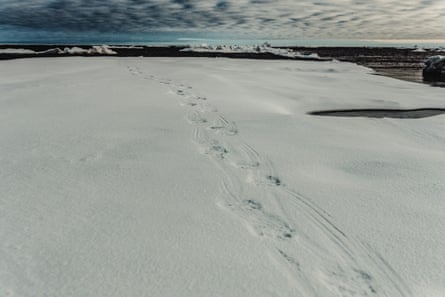
Indeed, the change is alarming. Ice-free summers by mid-century are very likely; without the ice to reflect heat, the ocean will warm even faster, potentially affecting global ocean circulation. Most of the damage already being wreaked in the Arctic is indirect, via the warming and acidification of the oceans from the continued burning of fossil fuels. Protecting an area by drawing a line around it can only go so far.
“It’s an interesting nut that hasn’t been cracked,” Sommerkorn says. “How do you motivate the protection of a place … not through direct measures, but through mitigation elsewhere?”
Sommerkorn wants to see more MPAs established across the Arctic – within national boundaries and between nations – but he notes that protected areas are about more than an individual patch of land or sea; they provide havens for species to thrive while the environment outside is in decline. Those healthy populations can push outward, reinforcing other places. “The network can do more than any individual site,” he says. “It will be a refuge.”

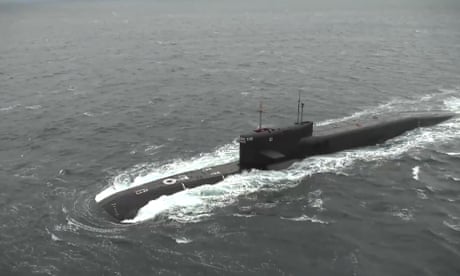

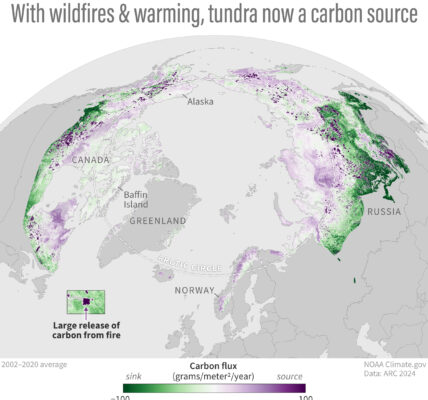


By creating a designated protection zone, we can help ensure the survival of Arctic wildlife and mitigate the effects of climate change. Let us act swiftly and decisively to safeguard this precious region for future generations.